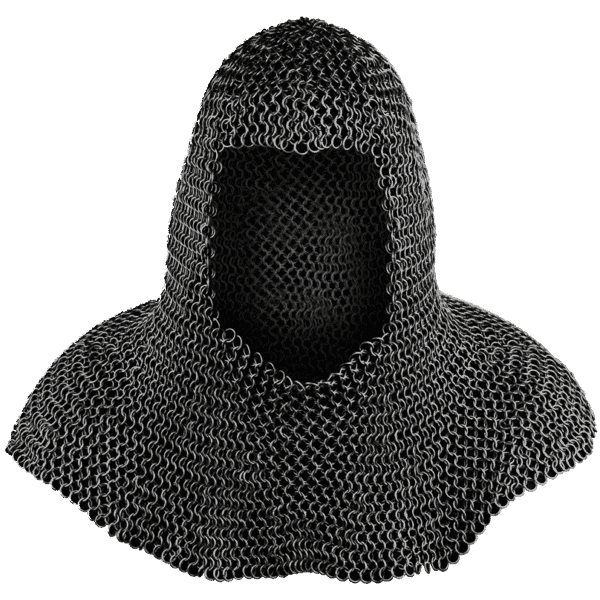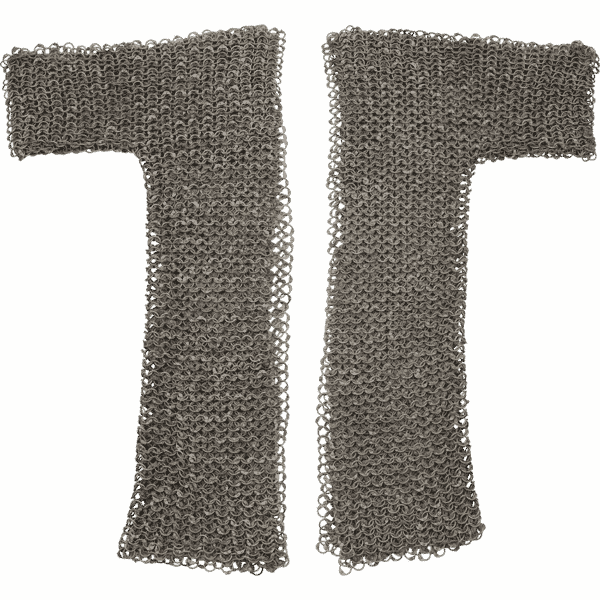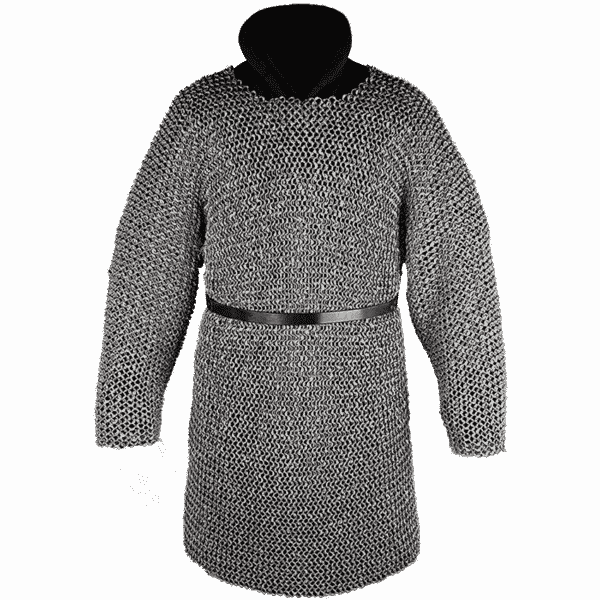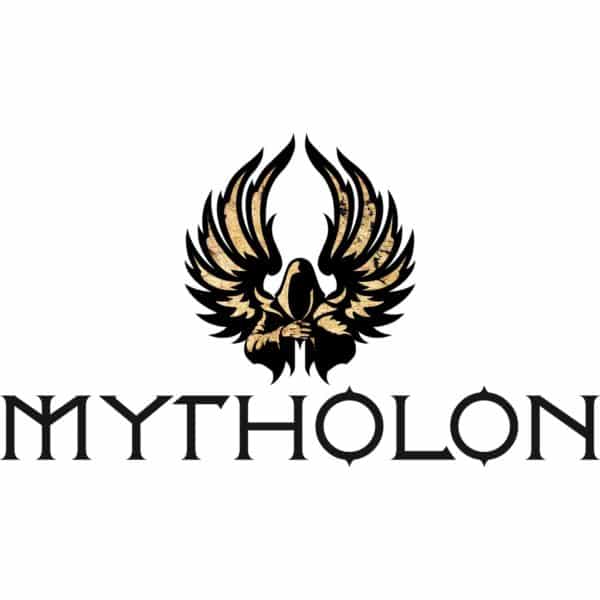(About) Black Chainmail for A Black-Hearted Warrior
Our Black Chainmail is a stunning knee-length hauberk in the style that was perfected in post-Roman Europe by Frankish knights and Northern European raiders, and went more or less unchanged throughout the medieval period.
A Suit of Blackened Steel
The expert makers at Mytholon have crafted this piece of chainmail to be a perfect compromise between historical accuracy, fantastic visuals, and affordability. It is made from mild steel, a period-accurate material that almost all of the chainmail that we see in the Middle Ages was made from: this is a hard carbon-steel that could be made on a small scale in iron bloomeries or fining hearths. Mild steel is one of the heavier materials used to make chainmail, but this weight is part of its appeal: it remains light enough to be worn all day, but it feels like you’re wearing proper medieval armor. But we have access to metalworking techniques that allow us to make superior suits of armor. Our Black Chainmail armor has been ‘gun-blued’, which means it has been chemically treated to give it a dark, brooding appearance – this also makes it significantly more resistant to corrosion and rust, but we cannot recommend enough that you maintain your chainmail regularly with oil or wax.
Hybrid Construction
The construction of the Black Chainmail hauberk is carefully designed to create an aesthetic and comfortable suit of mail that won’t sap your budget (you need that extra sheath-knife, otherwise it won’t look right!). The majority of the rings are ‘butted’ – this means that the ends of the wire-rings are pressed together rather than individually riveted; whilst this means this type of chainmail is not really suitable for heavy full-contact use, it does drastically reduce the amount of labour involved, thereby making it much more affordable. However, the master armor-makers at Mytholon have decided to use riveted rings at critical points of the chainmail, such as the armpits, in order to increase durability and prevent stretching – this means that this hauberk is suitable for light contact in re-enactment and LARP contexts. It is made in a traditional European ‘4-in-1’ configuration, giving an excellent combination of protection and flexibility.
In all, the Black Chainmail will elevate your re-enactment or LARP portrayal onto another level. Especially as the medieval period progressed, chainmail was often worn in combination with other forms of armor, such as boiled leather, transitional forms of armor such as splint mail, and eventually in conjunction with plate armor – so mix-and-match with our other products, and create your dream impression of a medieval warrior.
(History) Black Chainmail Armor in History
Celtic smiths in the Roman Empire made chainmail called lorica hamata (‘armor made from hooks’) to outfit auxiliary troops, and they used a ‘4-in-1’ arrangement where each ring hooked into four of its neighbours. Whilst they originally used alternating rows of riveted round wire-rings and stamped flat rings to save on labour time, medieval smiths came to make tighter-knit suits of mail made wholly from riveted wire-rings. This became the standard arrangement amongst European chainmail-makers – whilst Middle-Eastern and Japanese smiths experimented with other more outlandish styles, such as hexagonal 6-in-1, pentagonal 5-in-1, or even hybrid forms that used a combination of mail and hooks as in the Japanese kusari katabira armor. As the medieval period progressed, European smiths even experimented with double- and triple-weaving their chainmail in bespoke suits made for wealthy patrons, to create 8-in-2 ‘cote of the Kinge’ and the almost-inflexible 12-in-2 ‘cloth of the Emperor’.
Whilst our Black Chainmail is an enormously visually striking piece of armor, is it historically accurate? In fact, we have a number of different sources (as well as a handful of rare surviving pieces of chainmail) which do show that chainmail in the medieval period was sometimes blackened. Japanese craftsmen had cultivated the urushi or lacquer-tree for millennia, and they used the hard, resilient lacquer made from its sap in the production of armor: almost all of the surviving iron or mild steel chainmail that we have from the Japanese Edo period has been laquered in black or red, to prevent corrosion and create a fearsome aspect. In medieval Europe, we have tantalising hints of similar processes being used: we know that pitch, elm sap and burnt-oil were all used in the period to blacken other metallic objects, and although we have no surviving chainmail that we can conclusively say had been treated in this manner, they do appear in the historical record. A medieval Archbishop of York’s probate inventory mentions a suit of blackened chainmail. Paulus Kal’s Fechtbuch (‘fighting manual’) of 1470 CE has a lush illustration of a knight in blackened armor and chainmail fighting on horseback. Our Black Chainmail is a dark shadow from the past…
Complete the kit! Check out this selection of tabards to go above your chainmail:
Technical Specifications:
- Material: Mild Steel
- Finish: Gun-Blued
- Ring type: Round, butted; riveted in armpits
- Rivet type: Domed
- Configuration: 4-in-1
- Weight: 25 lbs
- Size Guide: One-size
Chest: 35.4 – 49.2 Inches
Length: 33.5 Inches

 Historical Swords
Historical Swords Norse & Viking Swords
Norse & Viking Swords Templar Swords
Templar Swords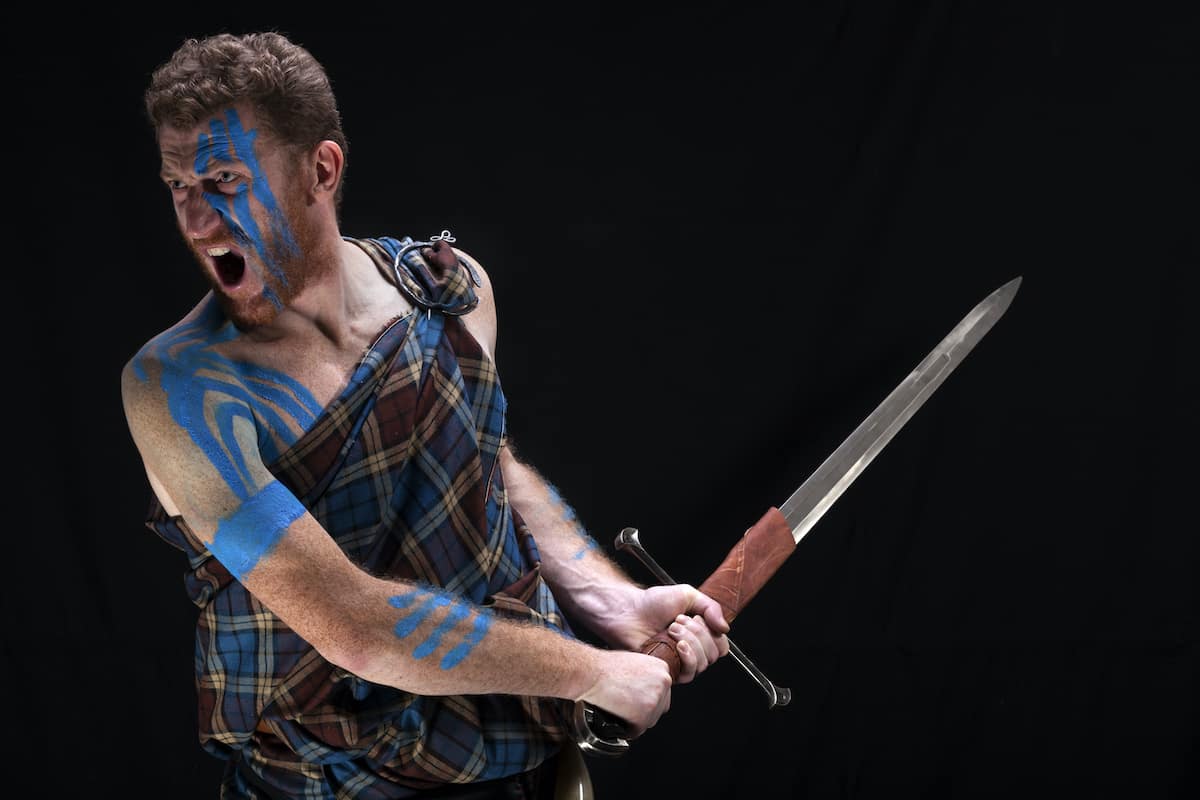 Claymore Swords
Claymore Swords Fantasy Swords
Fantasy Swords Chainmail
Chainmail Helmets
Helmets Torso Armor
Torso Armor Bracers and Arm Protection
Bracers and Arm Protection Gauntlets
Gauntlets Leg Armor
Leg Armor Cloaks
Cloaks Tabards
Tabards Shirts
Shirts Tunics
Tunics Dresses
Dresses Pants
Pants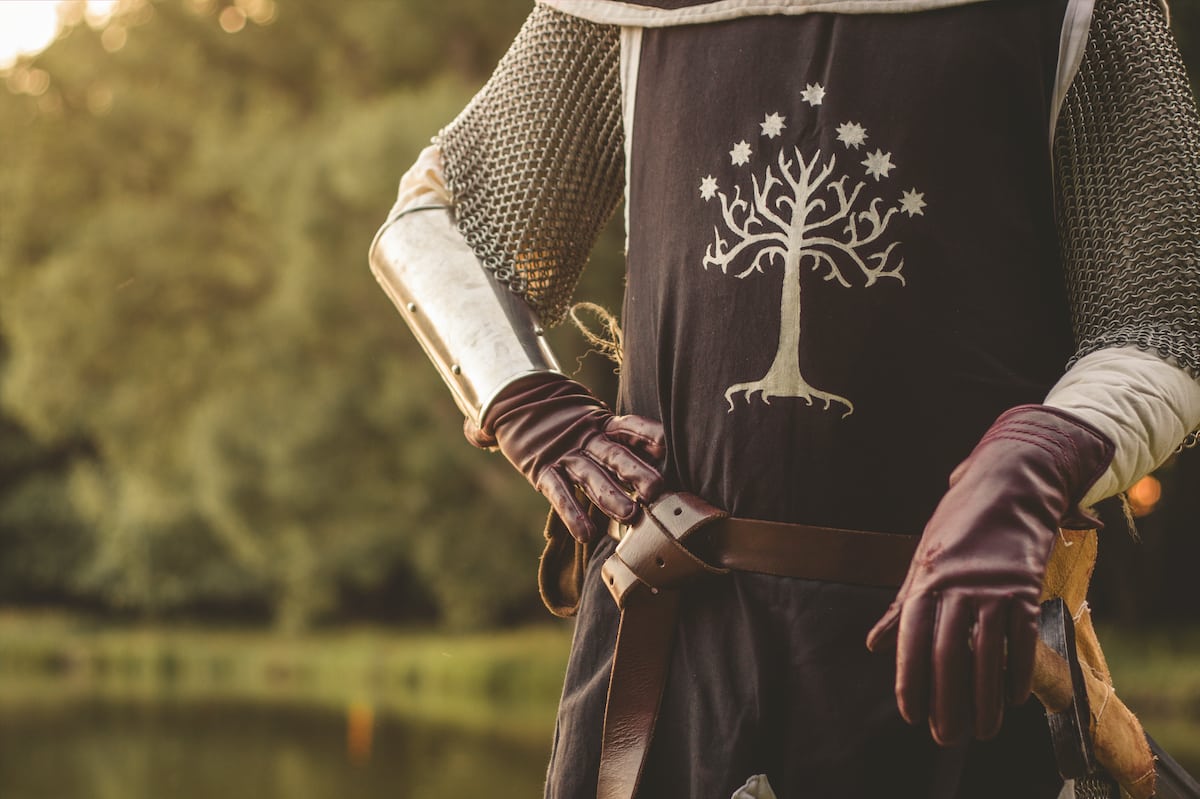 Gloves
Gloves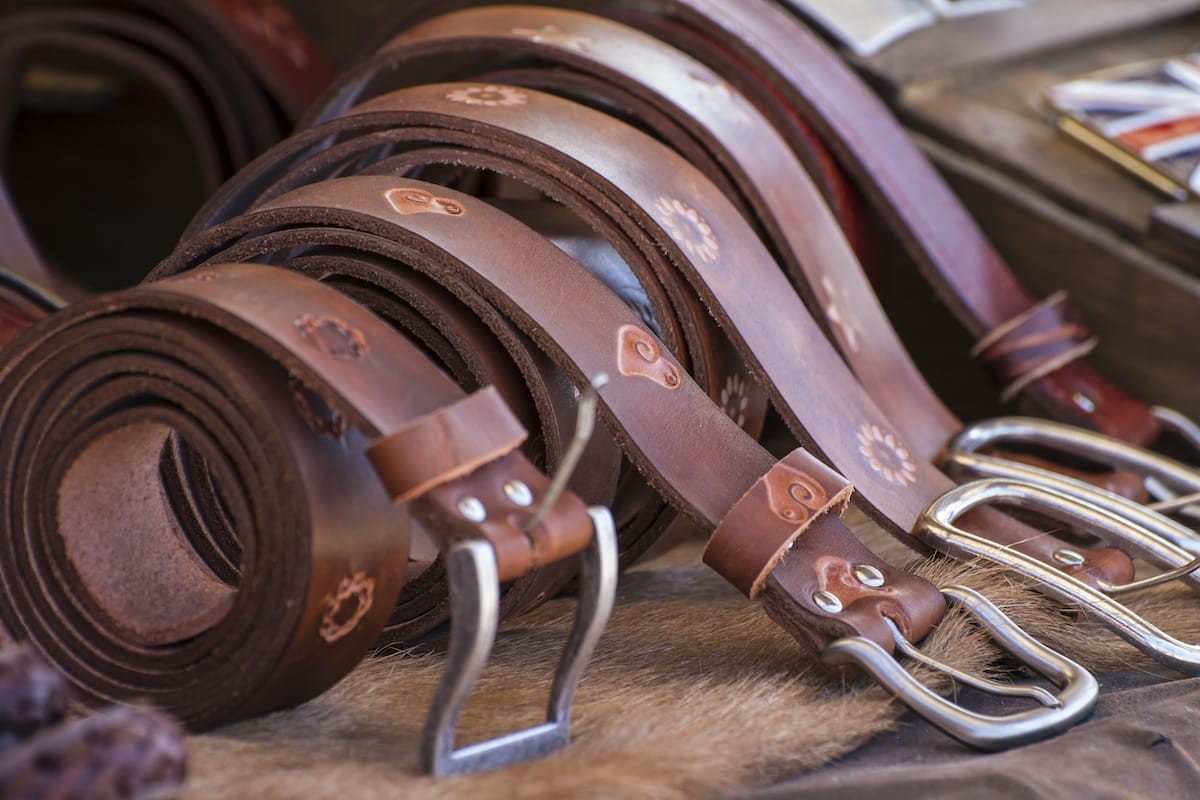 Belts
Belts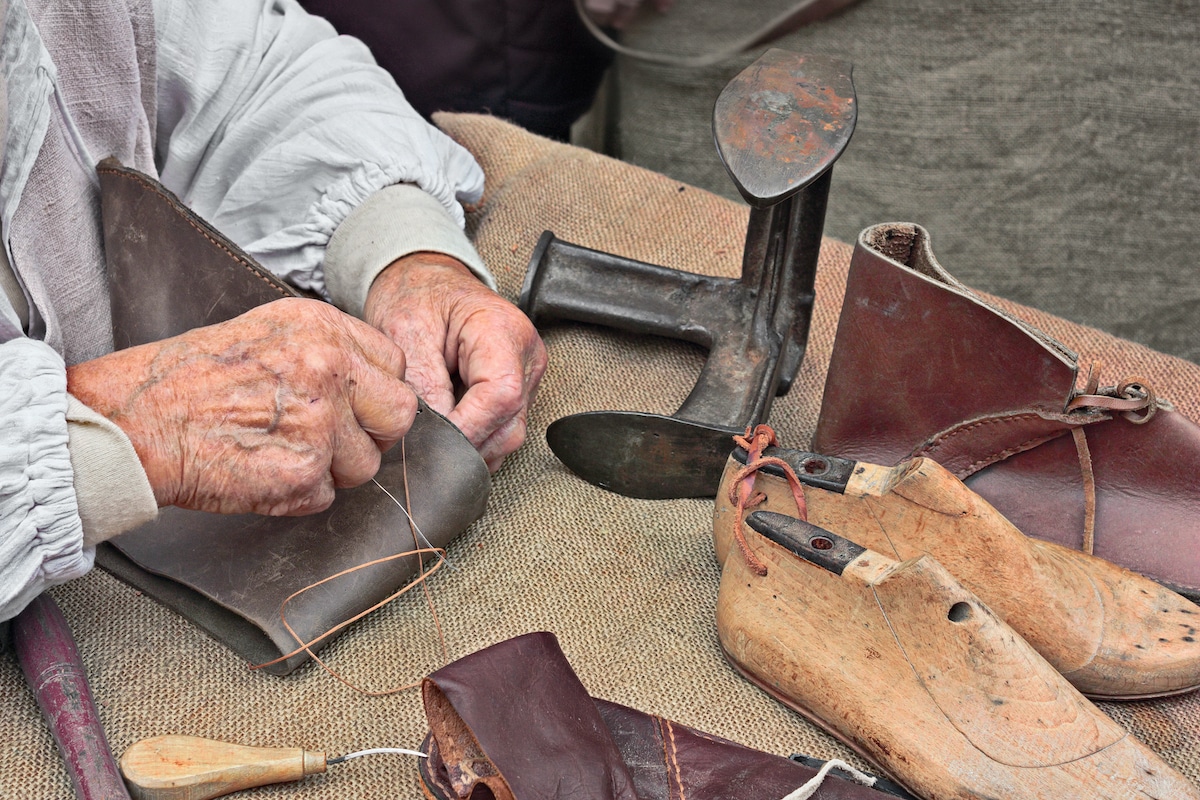 Shoes
Shoes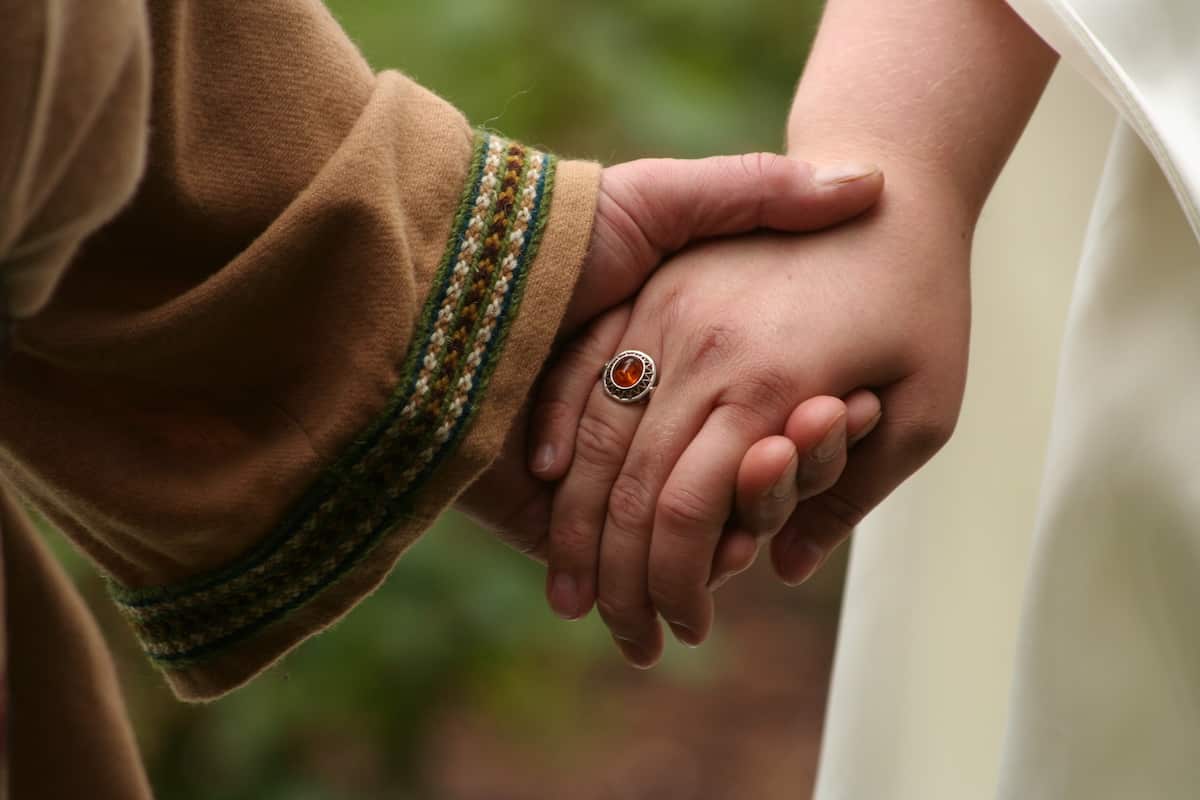 Rings
Rings Necklaces & Pendants
Necklaces & Pendants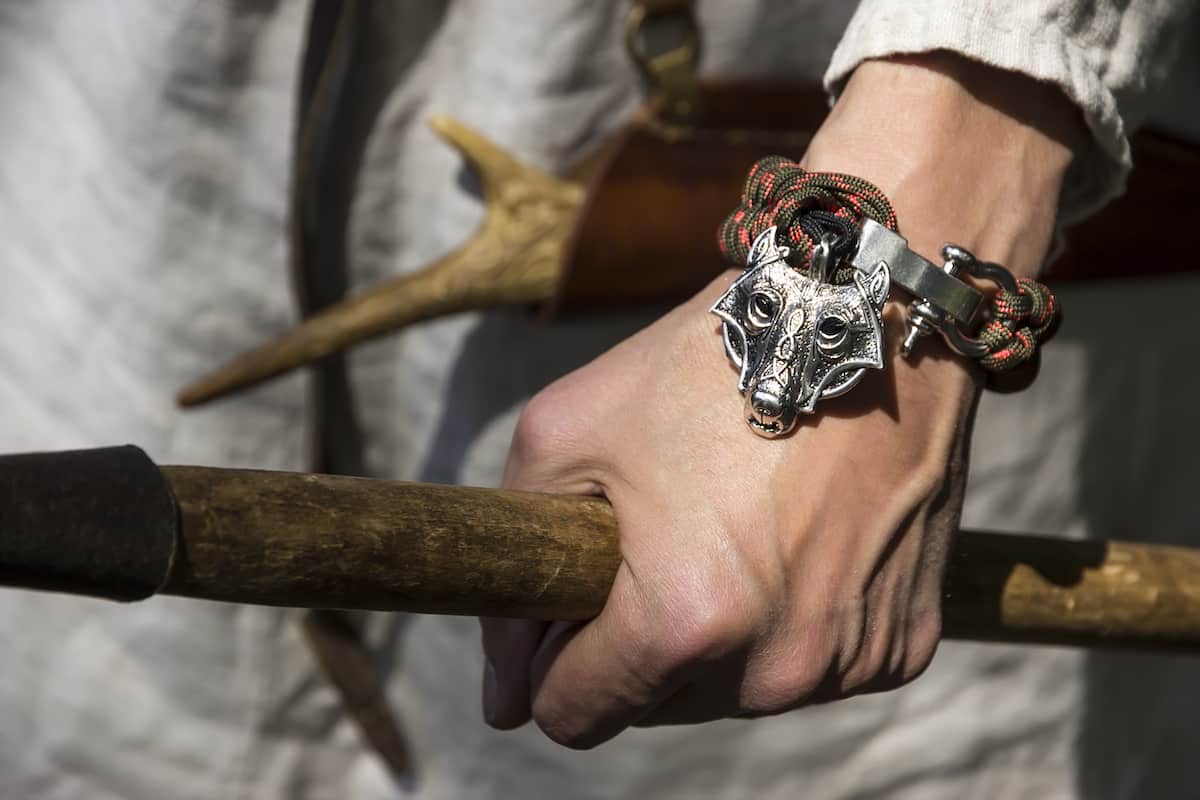 Bracelets
Bracelets










